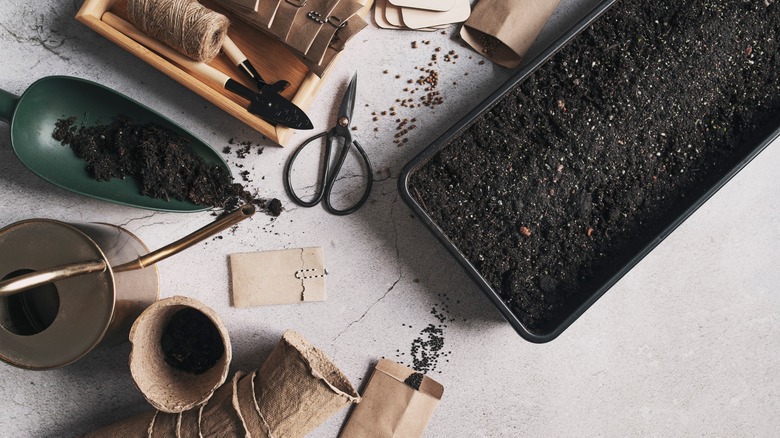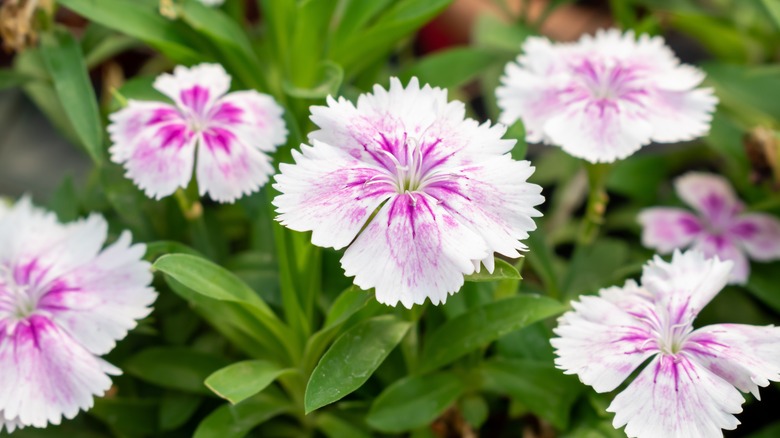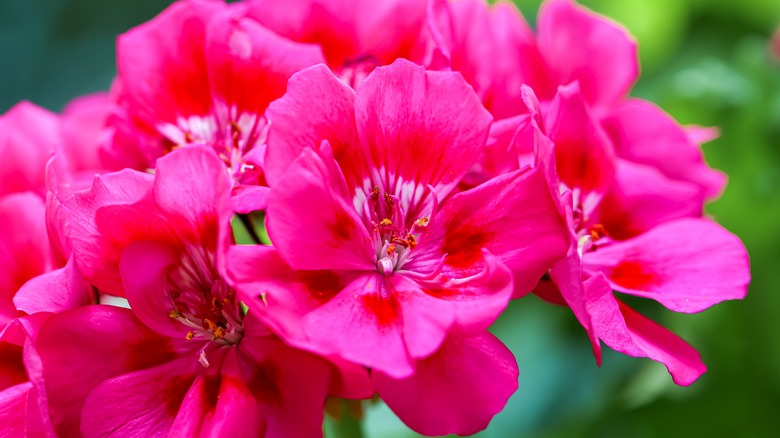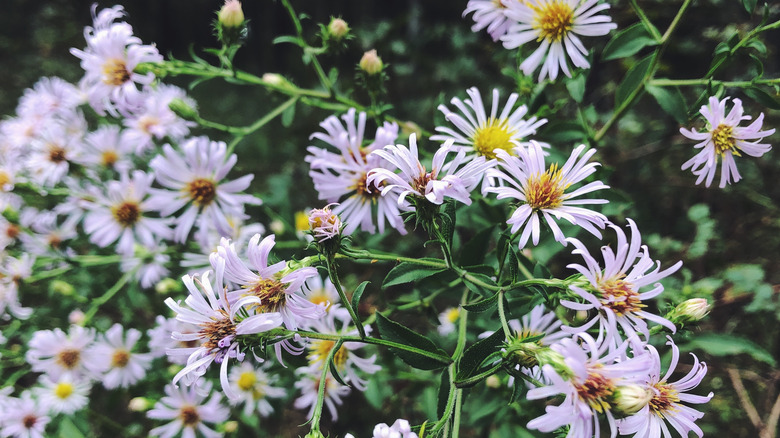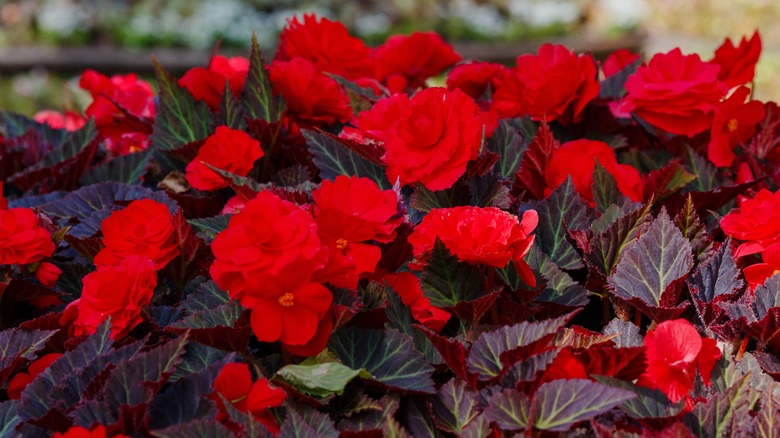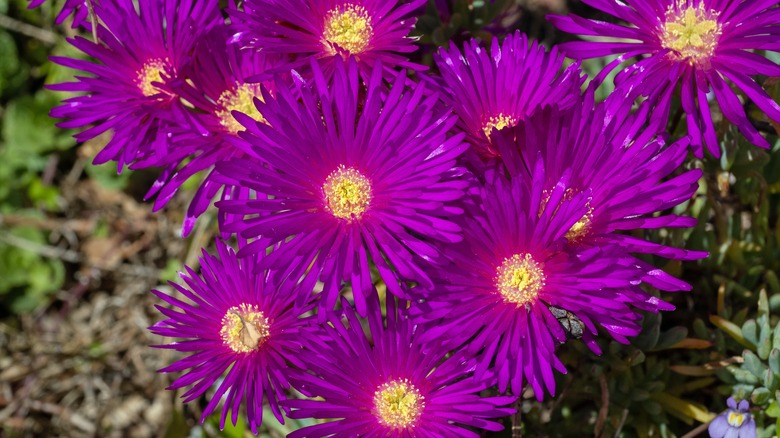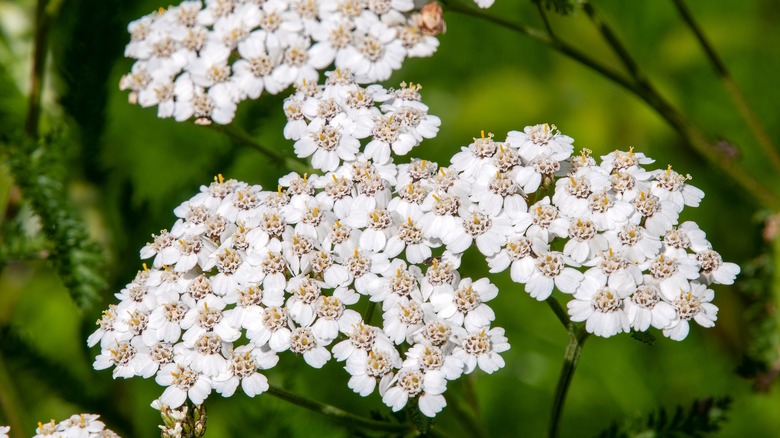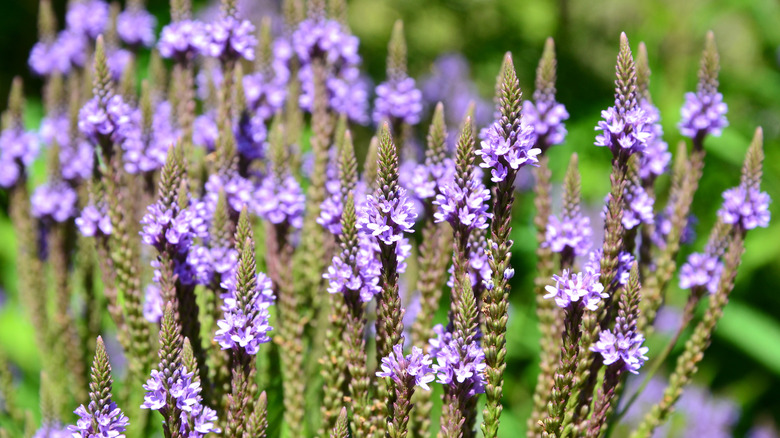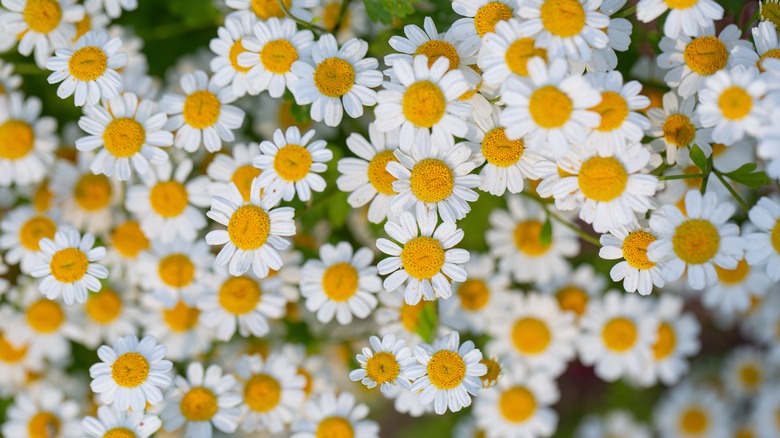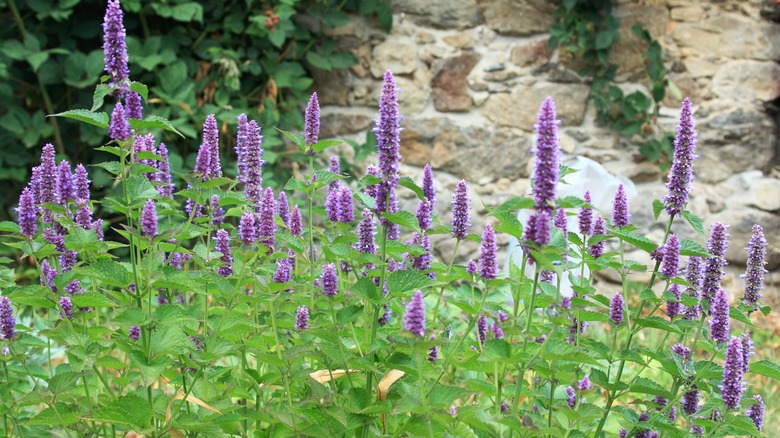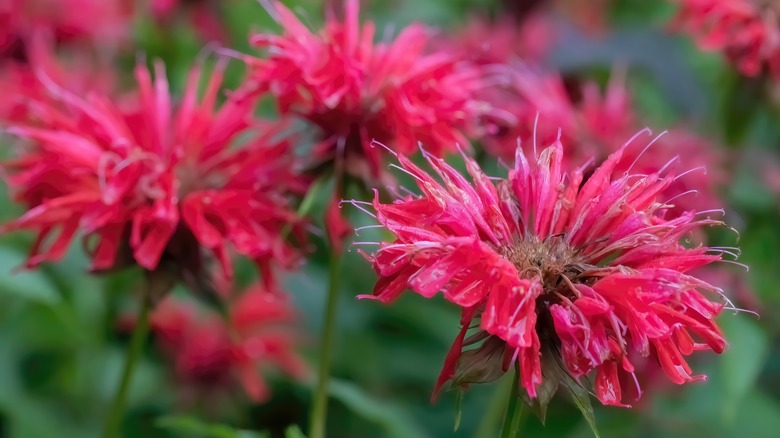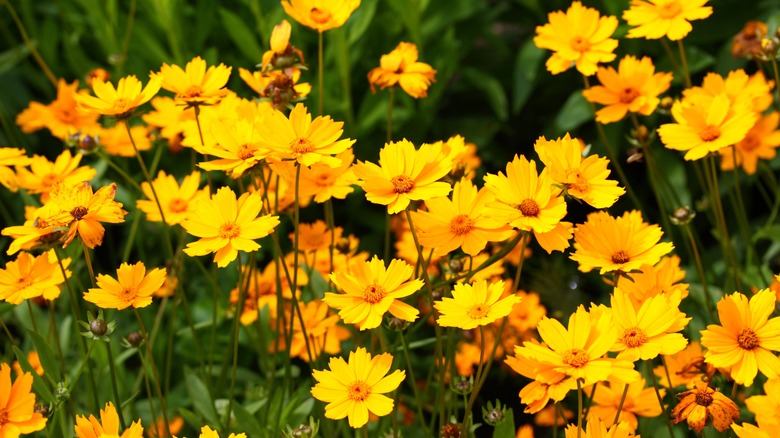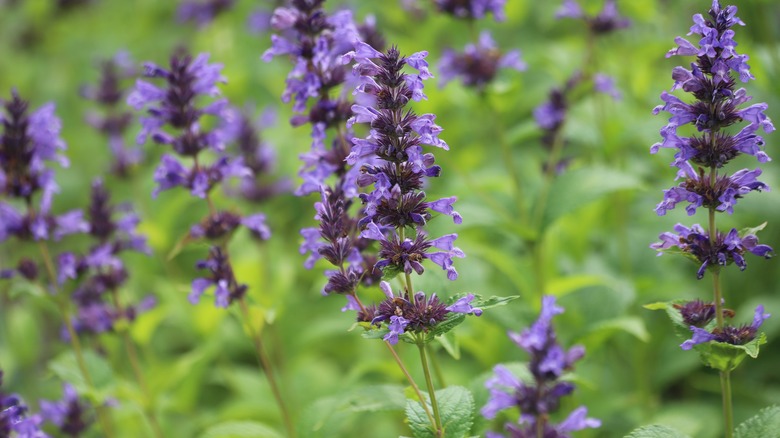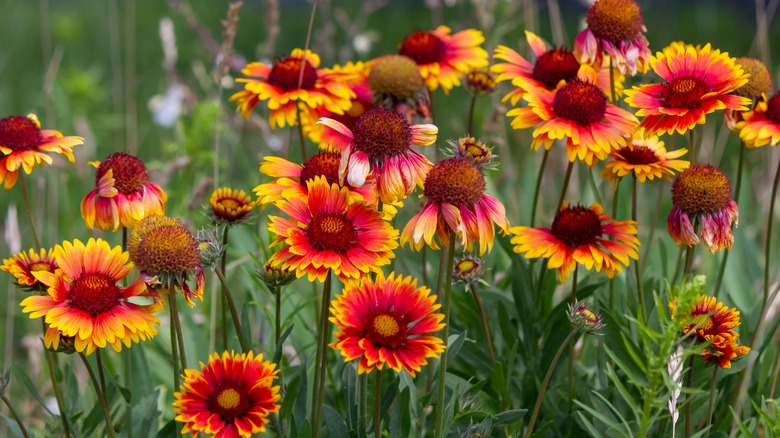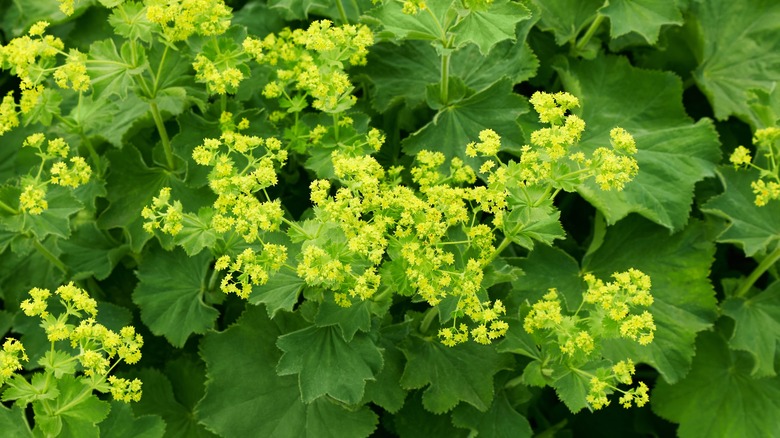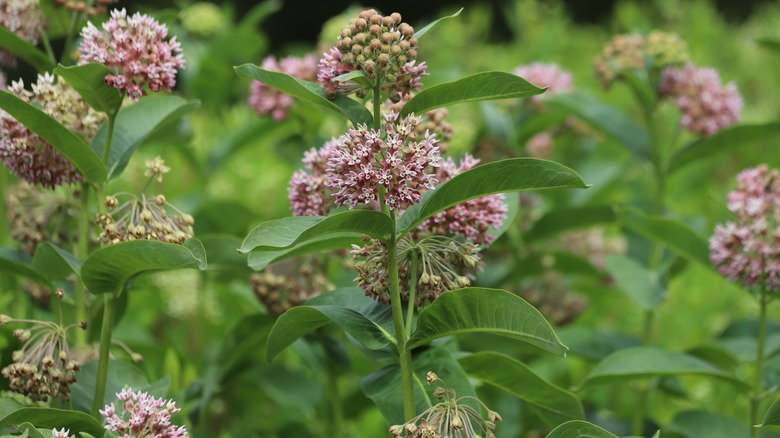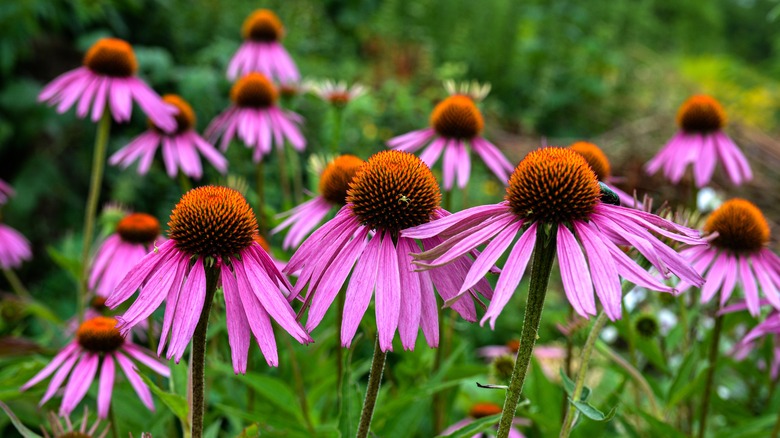16 Easy To Grow Perennial Flower Seeds If You Don't Have A Green Thumb
It's common for many flowering perennials to be propagated using vegetative methods, such as cuttings or division. But, if you don't have a green thumb, you might find these methods a little daunting. Lucky for you, many perennials can also be successfully grown from seeds; growing from seed is not that difficult when you know how. To grow some lovely perennial flowers from seeds, you only need small pots or seedling trays and a good seed-raising mix to fill them with. If you're a new gardener and haven't developed your green thumb yet, buying a commercial seed-raising mix rather than making your own is a smart idea.
While you could also just sow the seeds in the garden, this method can often be a bit hit-or-miss, because you need to prepare the soil, plant at the correct depth, and keep the newly sown seeds well-watered without flooding them. You also have to prevent birds from picking up the seeds before they've had time to germinate. So, it's much easier, when you're just starting out, to sow your seeds into pots and then transplant the perennials into the garden once they're large enough. Not all perennials are easy to grow from seed, though. That's why we've selected 16 varieties you should succeed with. Once you've gotten the hang of growing perennials from seed, you might want to discover some ways to use perennials to dress up your front porch.
Dianthus
Dianthus are pretty little flowers that come in a vast variety of colors to add vibrancy to your garden. These lovely plants are easy to grow from seed. You just need to sow the seeds into your pots filled with seed-raising mix and keep them moist until they germinate. Germination should only take around seven to 10 days, but can take longer for some varieties. Seedlings can be planted into a sunny spot in the garden when they have at least one true leaf, just be sure to use well-draining soil. As a bonus, these flowers are deer-resistant.
Geraniums
Geraniums are one of the easiest plants to propagate from cuttings, but they can also be grown from seeds. Sow the seeds into your prepared pots. Keep the soil moist and wait for the little seeds to germinate. This should only take around seven to 10 days. Once the seedlings have grown some true leaves, they need to be acclimatized to growing outside before planting them in the garden. To do this, move your plants into a shaded spot and then progressively expose them to sunlight. Geraniums like a sunny spot in the garden, but can handle some shade.
Elliott's aster
Elliott's aster (Symphyotrichum elliottii) is a perennial wildflower endemic to Florida. It can easily be grown from seeds and then transplanted into the garden in a sunny spot. The seeds can take from seven to 21 days to germinate. This stunning perennial can reach a height of 3 to 4 feet as it grows to maturity. The flowers are fragrant and loved by pollinators. This plant can spread around your garden through suckersm so you'll need to keep it controlled. But, it's one of the best native plants to grow if you live in the Southeast U.S.
Tuberous begonias
Tuberous begonias are easy to grow from seed, but the seeds are extremely tiny, so sowing them finely can be a little tricky. To make this easier, mix the fine seeds with a little sand and then just scatter this over the mix in the pots. There's no need to cover the seeds if you've mixed them with sand. Make sure that the mix is moist before sowing the seeds and cover the pots with a plant cloche to maintain a level of humidity. Tuberous begonias prefer a shady spot in the garden with moist soil.
Hardy ice plant
If you like the idea of filling your garden with a carpet of brilliant purple and pink flowers, then you should consider growing the hardy ice plant (Delosperma cooperi) from seed. This succulent is easily grown from seeds and will flower within just a few months. Once again, the seeds are tiny and mixing them with sand will make sowing easier. Keep the seeds warm to guarantee germination. The best time to add ice plant succulents to your garden is only after all danger of frost has passed. They will thrive in a sunny spot and sandy soil.
Common yarrow
Common yarrow (Achillea spp.) is an easy flowering annual to grow from seed. Scatter the seeds over the mix and just cover them lightly. They should take around 10 to 14 days to germinate. These plants are tough and drought-tolerant and make excellent cut flowers. Yarrow plants will also spread, so you'll have to keep them under control. If you cut the flower stems down after they're finished, you'll get a continuous flush of new blooms. Plus, the fern-like foliage has a nice spicy aroma. Yarrow flowers will also attract butterflies to your garden.
Blue verbena
Blue verbena (Verbena hastata) is a native wildflower that can self-seed in your garden once you plant it. Even though it's called blue verbena, the flowers are actually a lovely shade of purple. The seeds can be scattered over the soil and covered lightly. They'll take around 14 to 28 days to germinate, but can take longer. Blue verbena can grow in full sun or partial shade and is perfect for areas that have moist soil. This flower will attract bees and birds to your garden, as it's an important food source for wildlife.
Feverfew
Feverfew (Tanacetum parthenium) will brighten up your garden with its happy daisy-like flowers. The seeds need light to germinate, so just scatter them over the soil and press them down a little. It should only take around 10 to 15 days for them to germinate. The plant likes to grow in full sun, but will also tolerate partial shade. It prefers moist soil that is free-draining. The foliage has a strong spicy aroma. This lovely plant will attract pollinators and hummingbirds to your garden, but take care because it can be toxic to pets and cause dermatitis in humans.
Anise hyssop
Anise hyssop (Agastache spp.) is the common name given to a number of different species in the Agastache family, with flowers in different colors, including purple and orange. The attractive flower spikes can reach a height of up to 5 feet. Sprinkle the seeds over the mix and cover them very lightly. They should take around 10 to 20 days to germinate. The leaves have a lovely aniseed scent and are edible. They can be used in salads or for making tea. You can cut the flowers and put them in a vase indoors.
Bee balm
Bee balm (Monarda spp.) is part of the mint family and there are numerous species with flowers in various colors, such as pink, purple, and red. The seeds will take around 14 to 28 days to germinate. They do need some cold stratification to germinate, so you can either start them in winter or put the seeds in the fridge for several weeks before sowing. Only cover the seeds very sparsely because they need light to germinate. The plants prefer a sunny position in your garden and moist, but free-draining, soil.
Lobed tickseed
Lobed tickseed (Coreopsis auriculata) is another flowering perennial that's easy to grow from seed and you'll love the bright yellow daisy-like flowers. It's another native wildflower that you'll enjoy growing in your garden. The seeds will germinate fairly readily in around seven to 30 days. If you live in a humid climate, this plant will handle the humidity well. Over time, tickseed can spread around your garden through stolons, which are stems that creep along the ground. This can be controlled by regular pruning and maintenance. Lobed tickseed will attract bees, butterflies, and songbirds to your garden.
Catmint
Catmint (Nepeta spp.) is an attractive plant perfect for growing along the front of your borders. It has a strong scent that is loved by cats, hence its name. The seeds will take around 10 to 20 days to germinate, as long as you keep them moist at all times. The leaves of this plant are edible and mint-flavored. Catmint will also attract pollinators and butterflies to your garden. Its strong aroma is said to repel certain garden pests, such as squash bugs and aphids. Grow your catmint in a sunny spot that has well-drained soil.
Blanket Flower
Blanket flowers (Gaillardia spp.) are another stunning daisy-like flower that you might like to grow from seed. These are quite low-growing (maximum height is 2 feet), so they're ideal for the front of borders. The seeds need light to germinate, so don't over them after sowing. It will take around 10 to 20 days for them to germinate. The plants prefer to grow in full sun and are fairly drought-tolerant once established. Deadheading the spent blooms will encourage the plant to produce more flowers. Some people may find the plants irritant to their skin.
Lady's mantle
Lady's mantle (Alchemilla mollis) is a herbaceous perennial in the rose family. It has lovely large, soft, and downy leaves with sprays of yellow flowers. The seeds do need some cold-stratification, so put them in the fridge for about four weeks before sowing. They should take around 21 to 30 days to germinate. Lady's mantle can be planted in full sun or even a shady spot in the garden, which makes it really versatile for all types of plantings. This plant will attract butterflies to your garden and is both deer and rabbit-resistant.
Common milkweed
If you want to attract monarch butterflies to your garden, you should consider growing common milkweed (Asclepias syriaca) from seed. The seeds will only take around 10 days to germinate. This native wildflower will grow well in a sunny spot in your garden. The flowers are fragrant and you can get varieties in shades of pink, purple, green, and white. Common milkweed is not fussy about what soil it's grown in and is considered drought-tolerant. Keep in mind, though, that all parts of the plant are toxic to both pets and humans.
Purple coneflower
Purple coneflowers (Echinacea purpurea) make a stunning addition to any flower garden and they're easy to grow from seed. The seeds should only be covered lightly and will take around 10 to 21 days to germinate. These gorgeous daisy-like flowers are native to the eastern and central U.S. The plant will make quite a statement in your garden, as it can reach a height of up to 4 feet. It prefers moist, but well-draining, soil and can be grown in full sun or partial shade. Once planted in the garden, purple coneflower will readily self-seed.
